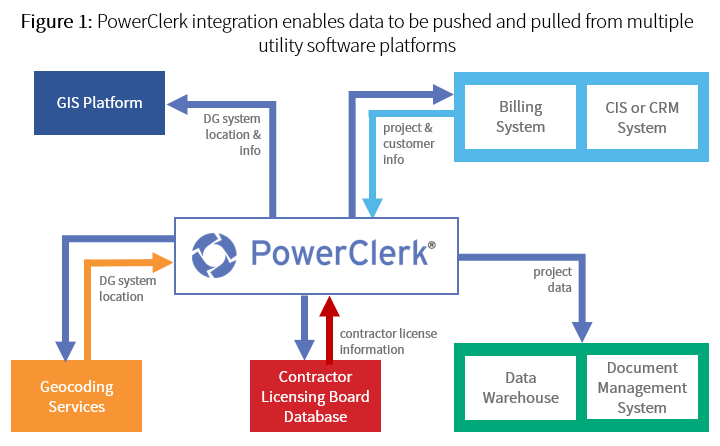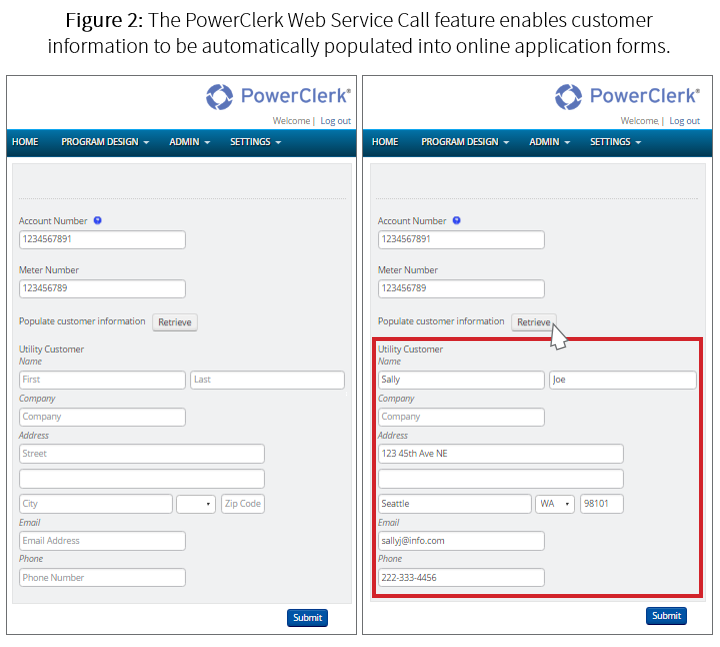Modern utilities are collecting and storing more data about their customers and the grid than ever before. This data is captured for many different business purposes and is stored in a multitude of systems “owned” by separate utility organizations. These local or cloud-based systems include ERP (enterprise resource planning) and CIS (customer information system) software packages, billing systems, a number of real-time operations systems (e.g., SCADA or Energy Management Systems), engineering tools and planning tools.
It’s common for different organizations within a utility to have overlapping data requirements, but independent storage locations for the data they use. This isolation of datasets can be referred to as data “siloing.” Siloing data in multiple software platforms causes inefficiencies such as duplication of effort, extra data-gathering steps and increased opportunities for user error. Siloed data hampers business processes (particularly interdepartmental) and is a problem that must be solved with integration between systems.
Is there a perfect solution to this complex problem? Utilities collect a broad range of information to run their businesses, but let’s narrow the scope of this thought experiment to customer information only.
It sounds attractive to replace every utility software system that touches customer information with a single “super solution” that has a unified, master database. Imagine this solution had the functionality to meet the needs of every utility employee who requires customer information to do their job.
Unfortunately, this concept isn’t realistic, as it would be unreasonably expensive to replicate all the unique and specialized functionality provided by the utility’s current set of separate software tools. A more tenable and quicker-to-implement solution to data siloing is to use software tools that come with off-the-shelf features that support integration with other systems.
Let’s narrow “customer information” further to examine the specific case of DER (distributed energy resource) interconnection process management. In this scenario, the ever-increasing adoption of DERs such as solar is driving U.S. utilities to seek specialized software to manage their interconnection business processes.
An ideal implementation strategy would allow utility employees with specialized tasks to continue business as usual using their current software tools (such as an engineer utilizing a GIS, or geographic information system) while a new interconnection process management tool, such as PowerClerk®, is seamlessly phased in.
The new interconnection tool should integrate with existing software systems to push and pull relevant information and create a database of interconnected distributed energy resources. This system would work in concert with customer information systems, GIS and distribution planning systems to enable the utility to efficiently manage the interconnection process.
In this example, the interconnection software platform serves as the utility’s DER interconnection control center by integrating with existing software and gathering all of the data needed for decision making in one place.
Creating the DER interconnection control center with PowerClerk
The PowerClerk software platform uses standards-based web services to enable utilities and their applicants to automate aspects of administering and participating in application-based programs. Utility systems can make inbound web service calls to automatically get updates from PowerClerk on a regular basis, and can also push data to PowerClerk. This makes it possible to keep data warehouses, document management systems, customer information systems and other systems in sync with the DER system-of-record.
Additionally, PowerClerk can make outbound calls to external web services to initiate actions in those systems, and/or validate information entered into a form, such as a customer’s account number. With this capability, PowerClerk can truly serve as a utility’s DER control center, and push and pull data as needed to or from other systems, as shown in Figure 1.

For example, integrations have been developed between PowerClerk and the following:
- ESRI’s ArcGIS for automatically creating maps that help electric utilities understand their distribution networks and related capacities to maintain power quality and reliability.
- CIS/CRM systems for tracking customer information.
- Billing systems.
- Data warehouses, such as California solar statistics.
- Document management systems.
- Geocoding services for looking up latitude and longitude based on address.
- State-level contractor licensing databases.
The PowerClerk team is also pursuing opportunities to integrate with additional software systems. This includes alternative providers of the software categories above, and integrations with other categories of software such as distribution planning and utility asset management systems.
Powering integration for a Northeastern U.S. utility
One utility in the Northeast region of the U.S. is using PowerClerk to integrate with two of their existing systems: the utility’s CIS and metering work management system. As a result, when a contractor fills out an interconnection application, the utility customer’s address and service information (circuit name, transformer name, etc.) is automatically populated into the online form in PowerClerk based on a matching account number and meter number.
This saves time for the applicants who no longer have to type in customer information, and project reviewers who no longer need to verify service information. It also reduces errors by preventing users from entering invalid names or addresses. Linking PowerClerk to the existing utility CIS allows the customer’s information to be validated with a web service call before the utility even starts reviewing the submitted application.

In addition, a project status change in PowerClerk triggers a call to the utility’s metering system to automatically create a work order for the metering shop. This eliminates manual emails from the DER team to the metering group and manually-created work orders, ultimately speeding up the utility’s application processing time.
What’s next?
PowerClerk customers are finding great success and increased efficiency by integrating PowerClerk with other software and web services. The PowerClerk team continues to explore integrating PowerClerk with other utility systems and software tools, such as distribution planning software and asset management systems. Outside of DER interconnection and planning, PowerClerk’s integration-ready feature set can enable any utility organization to break down data silos and increase efficiency across the business.
With the continued expansion of PowerClerk’s integration capabilities, PowerClerk will not only be used as a utility’s system-of-record, but also a control center enabling collaboration between departments without requiring a huge price tag or unreasonable development timeline.
We encourage customers or software providers interested in creating integrations with PowerClerk to Contact Us.
